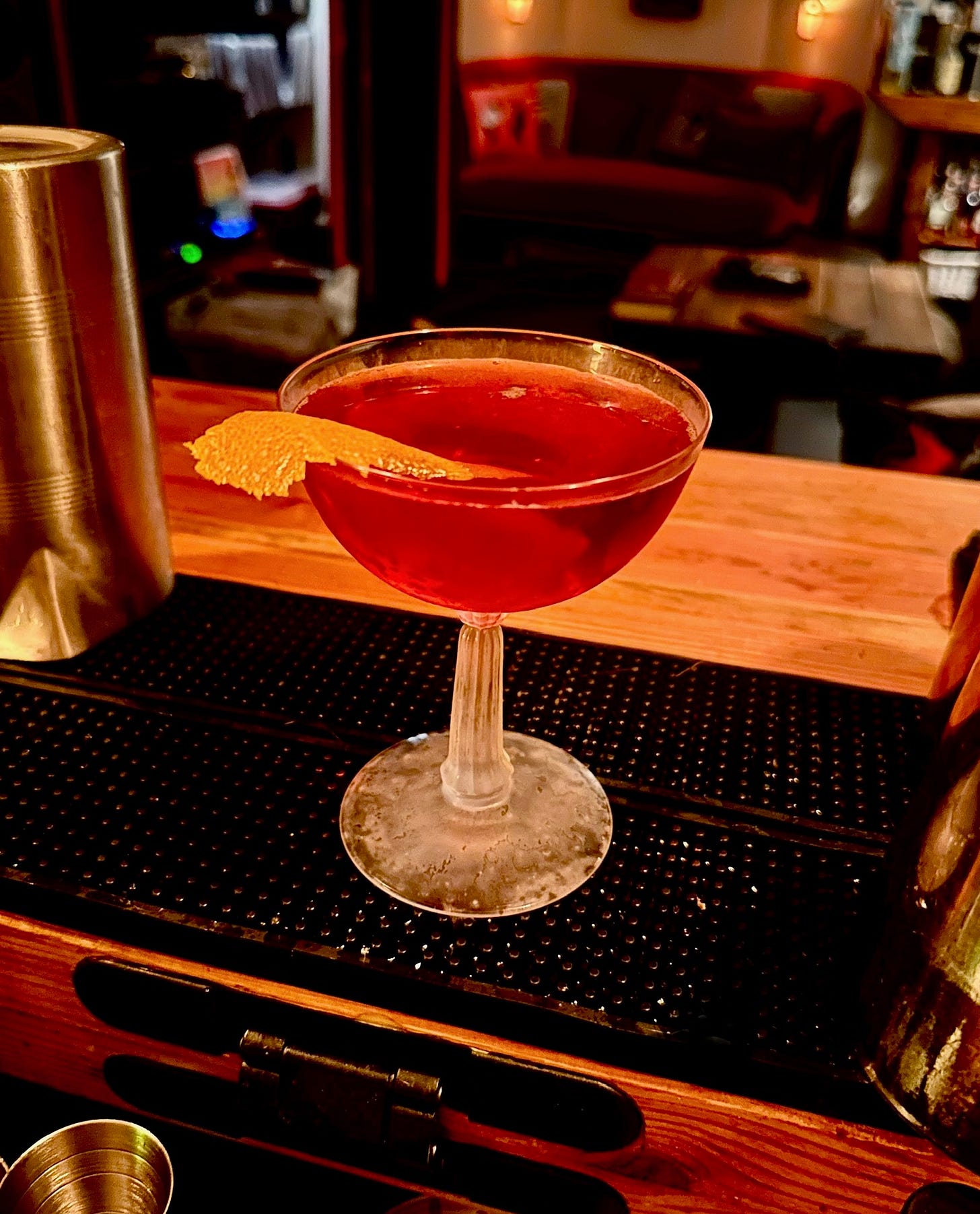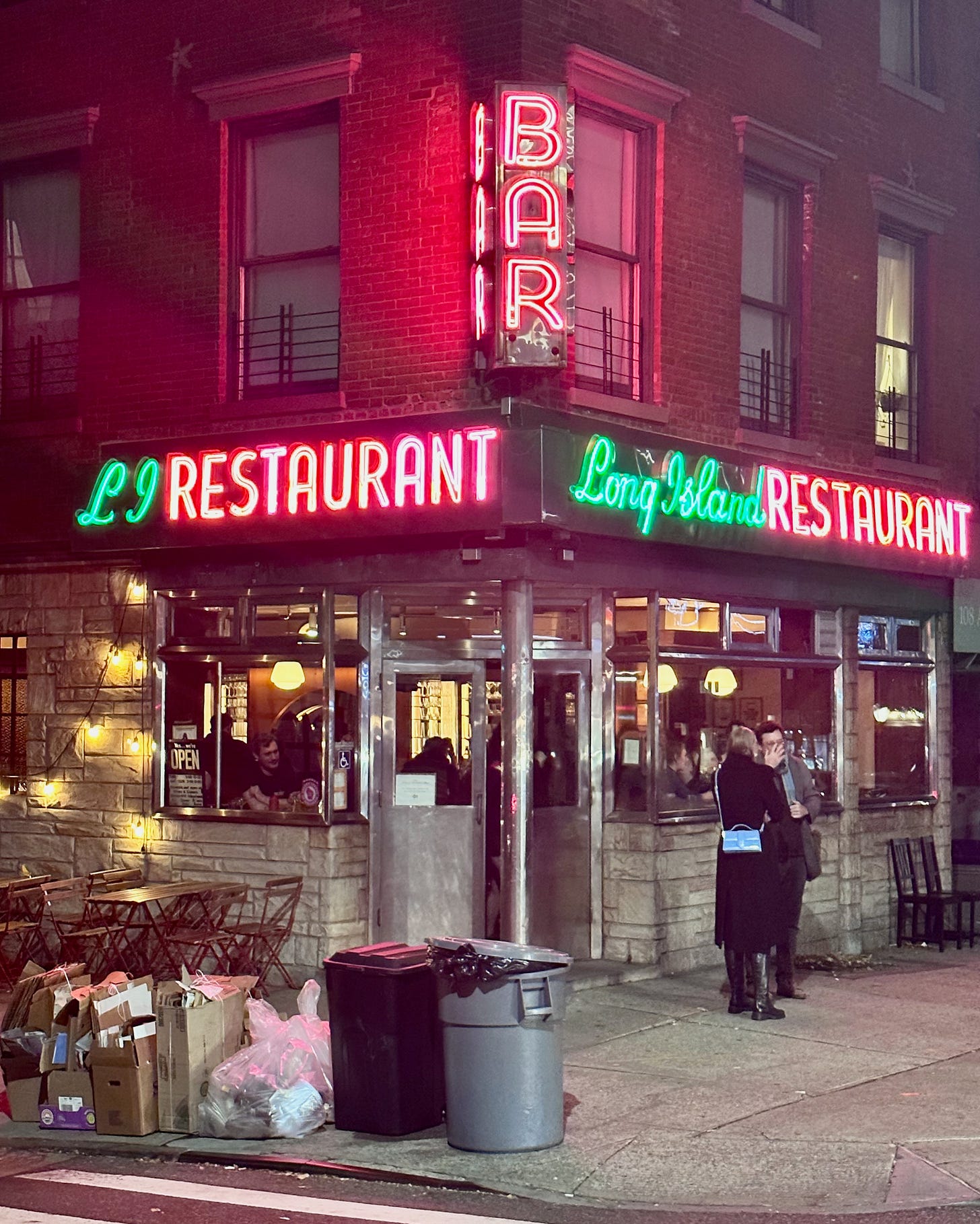Blend Everything: Lessons From a Complex Boulevardier
Blend your whiskey! Your vermouth! Your amaro! Blend it all!
Most of the time, when we think of a cocktail, we think of a contrasting arc of differing spirits and ingredients—the whiskey/vermouth interplay of a Manhattan, the tequila/Cointreau/lime chord of a Margarita, even just the basic spirit/bitters/sugar trio of an Old Fashioned. Each element is represented by a single “pour,” a line-item in the ingredient list.
You can make a lot of good cocktails this way. But over the last 20-odd years, bartenders have started to take those ingredients apart, splitting them into multiple line items: The whiskey in an Old Fashioned becomes rye and apple brandy; the base of a Manhattan becomes aquavit and peaty Scotch. (I am not making this one up!)
These “split base” drinks became especially popular around 2010 or so (although the technique existen before then), and base-splitting remains a frequently used method to add complexity to familiar cocktail structures and templates.
Occasionally, modifiers are split as well: That delightful aquavit/Scotch Manhattan I mentioned also splits what is usually the vermouth portion—the sweetener—between Cocchi Americano, an aromatized fortified wine, and Combier, an orange liqueur, creating a second layer of complexity, and a four-ingredient interplay.
But it’s much less common to see splits that stay within the same spirit—at least outside of tiki drinks, anyway. Tiki drinks have employed multiple rums for the better part of a century, but this approach is almost unheard of in more traditional cocktails. I can’t think of a single well-known drink that blends multiple bourbons, for example, or multiple tequilas. The only drink I can think of that blends multiple gins is, in fact, a contemporary tiki cocktail by Brian Miller, one of the bartenders who helped make base-splitting a common technique.
But I do know a popular, enduring cocktail, rooted in the old classics, that uses both two different ryes and two different vermouths—and maybe, unofficially even two different amari.
It’s the cult-hit Boulevardier served at Long Island Bar in Brooklyn, invented by Cosmopolitan-creator Toby Cecchini.
I’ve been thinking about this cocktail a lot over the past year or so, partly because I finally had it in its home environment at Long Island Bar, which lived up to the hype.
But it’s also been on my mind because of the way it connects to the drinks we’ve been looking at recently.
Like the “perfect” Manhattans we’ve made for the last couple weeks, it’s a split-vermouth drink—only the split is between two different sweet vermouths rather than between sweet and dry. And as I wrote about the 1890s-era Double Barrel, sometimes, when you want a lower-proof-but-still-wintry Manhattan, what you really want is a Boulevardier.
Most people think of the Boulevardier as a Negroni, but with whiskey instead of gin. That’s not wrong. But the Boulevardier is also a kind of Manhattan. And even more than most versions of the drink, Cecchini’s Boulevardier connects the dots between the two cocktails.
But I’ve also been thinking about it because of the lessons it teaches about blending spirits and other ingredients in cocktails—not just splitting a component between multiple ingredients that can play the same role, but blending, as in using multiple ingredients of the same fundamental type to create a more nuanced flavor profile.
It’s not only that this is a delicious drink on its own—though it very much is—it’s that it’s a sort of Rosetta Stone for an easy, under-utilized technique that allows you to modify and complexify many other drinks.
So this week, we’re going to break down Long Island Bar’s Manhattan-esque, split-vermouth Boulevardier. And then we’re going to look at how to further modify that drink, as well as many other drinks, particularly in the Manhattan and Negroni categories.
There will be Cynar, and a unique spin on the Negroni, plus a story about a 9-part version of that three-part drink.
Manhattan Transfer
Let’s start with the relationship between the Manhattan and the Boulevardier.
We’ve discussed this before, but it’s been a few years, and it’s worth going over again in step-by-step detail.
You might think of the Boulevardier as a species of Negroni, but it’s just as easy to categorize it as a Manhattan with a split base of whiskey and Campari. This is easiest to grasp if you treat each ounce of the drink as a single part.
Manhattan → Boulevardier
2 dashes bitters
1 ounce sweet vermouth → 1 ounce sweet vermouth
1 ounces whiskey → 1 ounce Campari
1 ounce whiskey → 1 ounce whiskey
Just drop the bitters, swap out half the whiskey for Campari and, like magic, you’ve transformed your Manhattan into a Boulevardier.
Alternatively, as I already hinted, if you took the Campari and swapped it out for dry vermouth, then reintegrated some dasher-bottle bitters, you’d have…a Reverse Perfect Manhattan, just like the one George Kappeler made in 1895.
Cecchini’s spin on the Boulevardier takes the drink and restructures it, changing the whiskey:vermouth:Campari ratio from 1:1:1 to 2:1:1.
So now let’s look at the transformation from the Manhattan to his version of the Boulevardier.
This time, we’ll represent each ounce as a single component, and treat the Campari as a bitters replacement:


